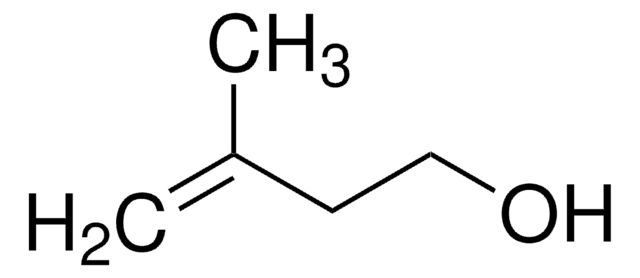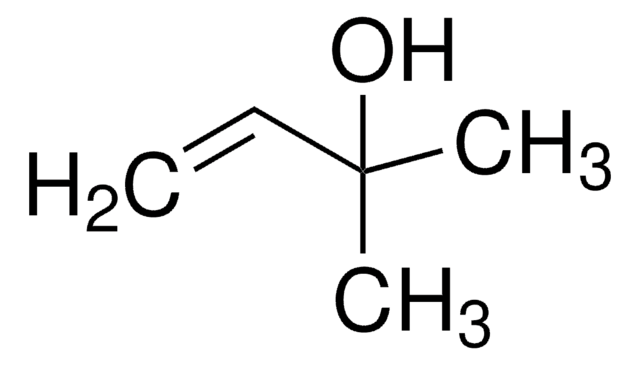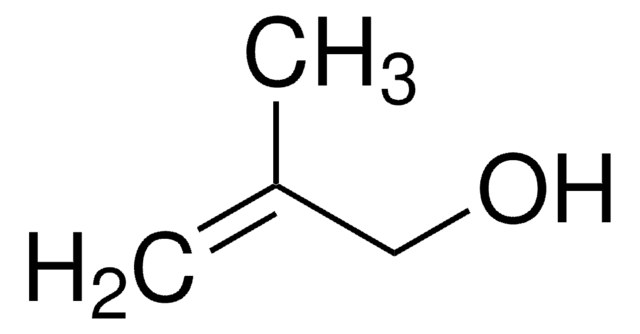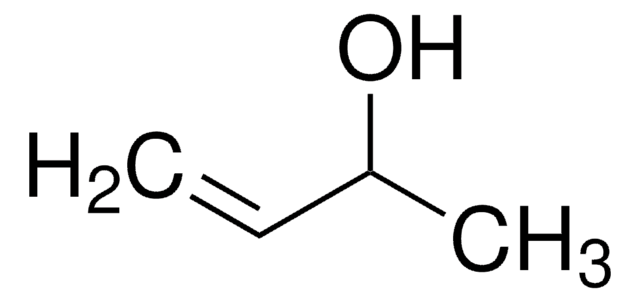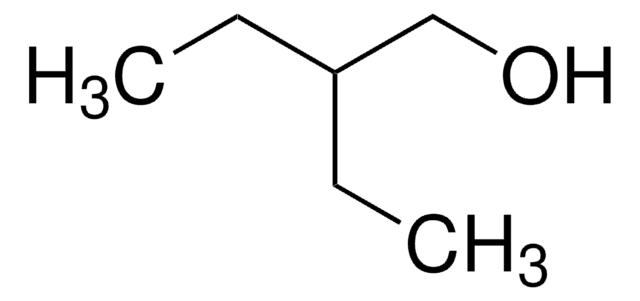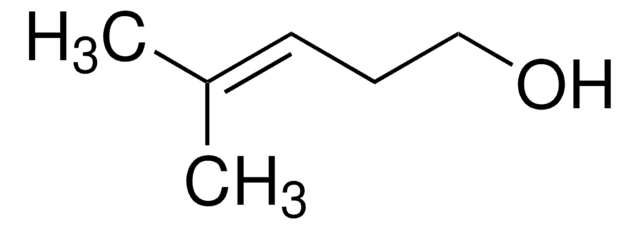162353
3-Methyl-2-buten-1-ol
99%
Synonym(s):
3,3-Dimethylallyl alcohol, Prenol
About This Item
Recommended Products
vapor pressure
1.4 mmHg ( 20 °C)
Quality Level
assay
99%
form
liquid
expl. lim.
16.3 %
refractive index
n20/D 1.443 (lit.)
bp
140 °C (lit.)
density
0.848 g/mL at 25 °C (lit.)
functional group
hydroxyl
SMILES string
C\C(C)=C\CO
InChI
1S/C5H10O/c1-5(2)3-4-6/h3,6H,4H2,1-2H3
InChI key
ASUAYTHWZCLXAN-UHFFFAOYSA-N
Looking for similar products? Visit Product Comparison Guide
General description
Application
signalword
Danger
Hazard Classifications
Acute Tox. 4 Inhalation - Acute Tox. 4 Oral - Eye Dam. 1 - Flam. Liq. 3 - Skin Corr. 1B - STOT SE 3
target_organs
Respiratory system
Storage Class
3 - Flammable liquids
wgk_germany
WGK 1
flash_point_f
124.7 °F - closed cup
flash_point_c
51.5 °C - closed cup
ppe
Eyeshields, Faceshields, Gloves, type ABEK (EN14387) respirator filter
Choose from one of the most recent versions:
Certificates of Analysis (COA)
Don't see the Right Version?
If you require a particular version, you can look up a specific certificate by the Lot or Batch number.
Already Own This Product?
Find documentation for the products that you have recently purchased in the Document Library.
Customers Also Viewed
Our team of scientists has experience in all areas of research including Life Science, Material Science, Chemical Synthesis, Chromatography, Analytical and many others.
Contact Technical Service